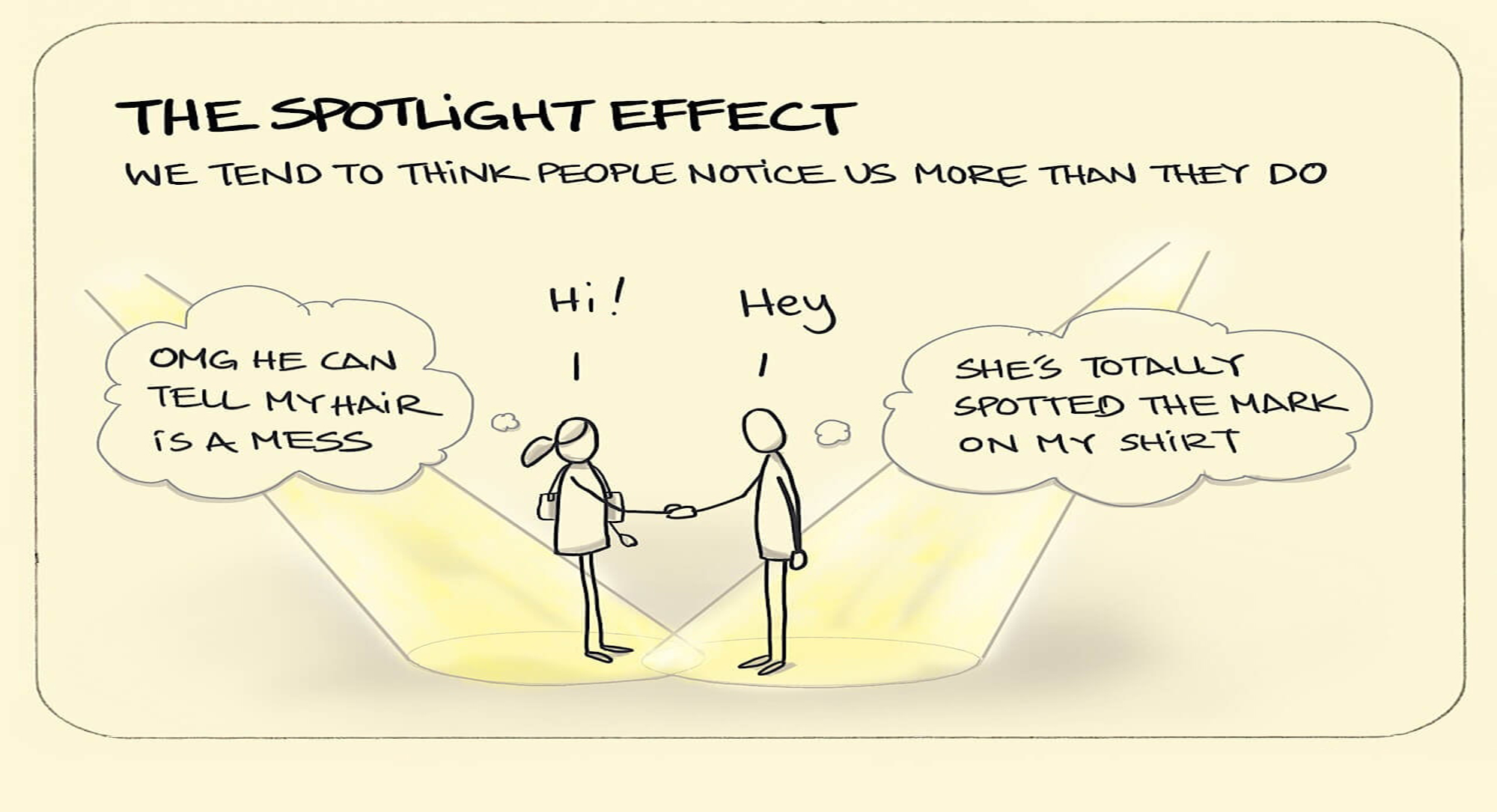The spotlight effect is a cognitive bias that involves individuals believing that they are the primary focus of others’ attention and that people notice and remember their actions or appearance more than they actually do. In other words, people tend to overestimate the extent to which others are paying attention to them.
Explanations:
The spotlight effect can be linked to self-consciousness and self-esteem. People often overestimate how much others observe them due to their own heightened self-awareness.
Examples:
Public Speaking: Someone giving a presentation may believe that every small mistake they make is noticed and remembered by the audience, even if it’s not the case.
Fashion Choices: An individual might think that people will notice and remember what they wore on a specific occasion, even when others may not pay much attention to it.
Social Awkwardness: People may assume that a minor social blunder they made in a group setting is the focus of everyone’s attention, when in reality, it might go unnoticed.
Solutions:
Perspective Shift: Remind yourself that most people are preoccupied with their own thoughts, concerns, and self-image, and they are not as focused on your actions or appearance as you might think.
Empathy: Reflect on moments when you didn’t notice or remember the minor actions or appearances of others. This can help you realize that others are likely to do the same.
Self-Compassion: Be kind to yourself and recognize that making mistakes or not being the center of attention is a natural part of human interaction.
Mindfulness: Practice mindfulness to reduce self-consciousness and stay present in the moment, rather than worrying about how you are perceived.
Addressing the spotlight effect involves a shift in perspective and recognizing that people are generally less focused on your actions and appearance than you might assume. This understanding can lead to reduced self-consciousness and more confident interactions with others.
